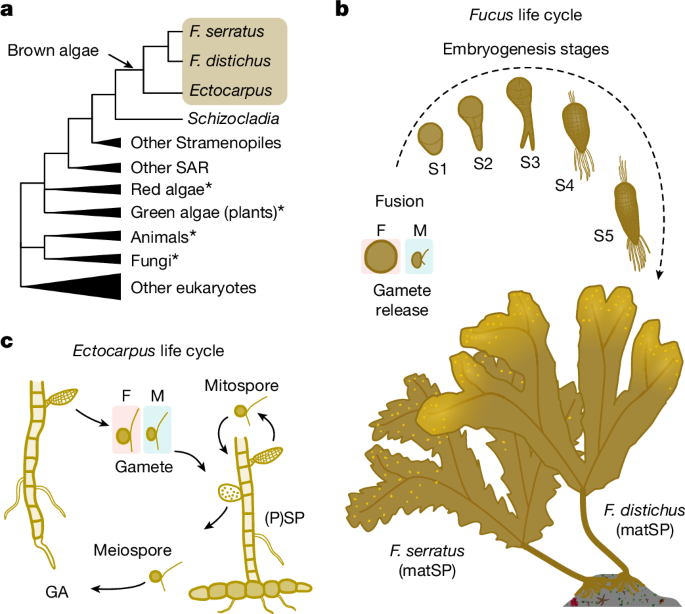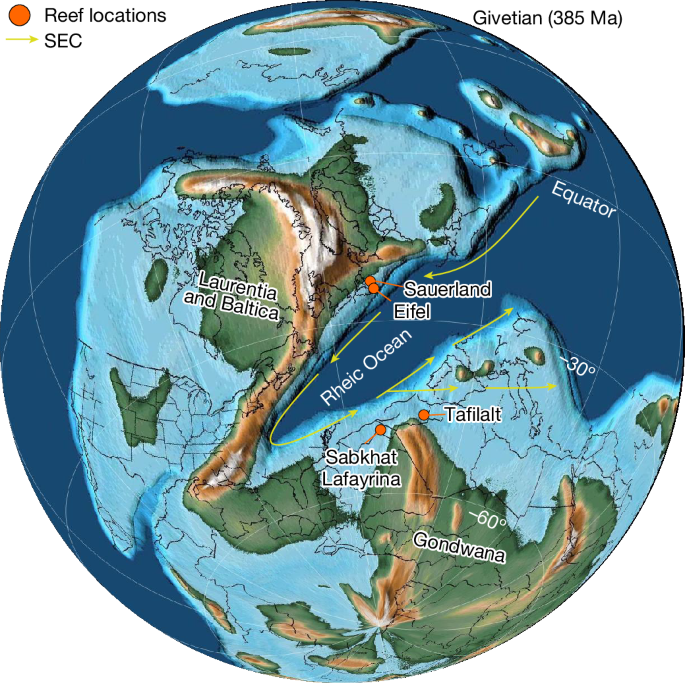2024-10-24 マックス・プランク研究所
<関連情報>
- https://www.mpg.de/23621242/1022-entw-algae-growth-follows-the-hourglass-model-151730-x
- https://www.nature.com/articles/s41586-024-08059-8
褐藻におけるトランスクリプトーム砂時計 A transcriptomic hourglass in brown algae
Jaruwatana Sodai Lotharukpong,Min Zheng,Rémy Luthringer,Daniel Liesner,Hajk-Georg Drost & Susana M. Coelho
Nature Published:23 October 2024
DOI:https://doi.org/10.1038/s41586-024-08059-8

Abstract
Complex multicellularity has emerged independently across a few eukaryotic lineages and is often associated with the rise of elaborate, tightly coordinated developmental processes1,2. How multicellularity and development are interconnected in evolution is a major question in biology. The hourglass model of embryonic evolution depicts how developmental processes are conserved during evolution, and predicts morphological and molecular divergence in early and late embryogenesis, bridged by a conserved mid-embryonic (phylotypic) period linked to the formation of the basic body plan3,4. Initially found in animal embryos5,6,7,8, molecular hourglass patterns have recently been proposed for land plants and fungi9,10. However, whether the hourglass pattern is an intrinsic feature of all complex multicellular eukaryotes remains unknown. Here we tested the presence of a molecular hourglass in the brown algae, a eukaryotic lineage that has evolved multicellularity independently from animals, fungi and plants1,11,12. By exploring transcriptome evolution patterns of brown algae with distinct morphological complexities, we uncovered an hourglass pattern during embryogenesis in morphologically complex species. Filamentous algae without canonical embryogenesis display transcriptome conservation in multicellular stages of the life cycle, whereas unicellular stages are more rapidly evolving. Our findings suggest that transcriptome conservation in brown algae is associated with cell differentiation stages, but is not necessarily linked to embryogenesis. Together with previous work in animals, plants and fungi, we provide further evidence for the generality of a developmental hourglass pattern across complex multicellular eukaryotes.


